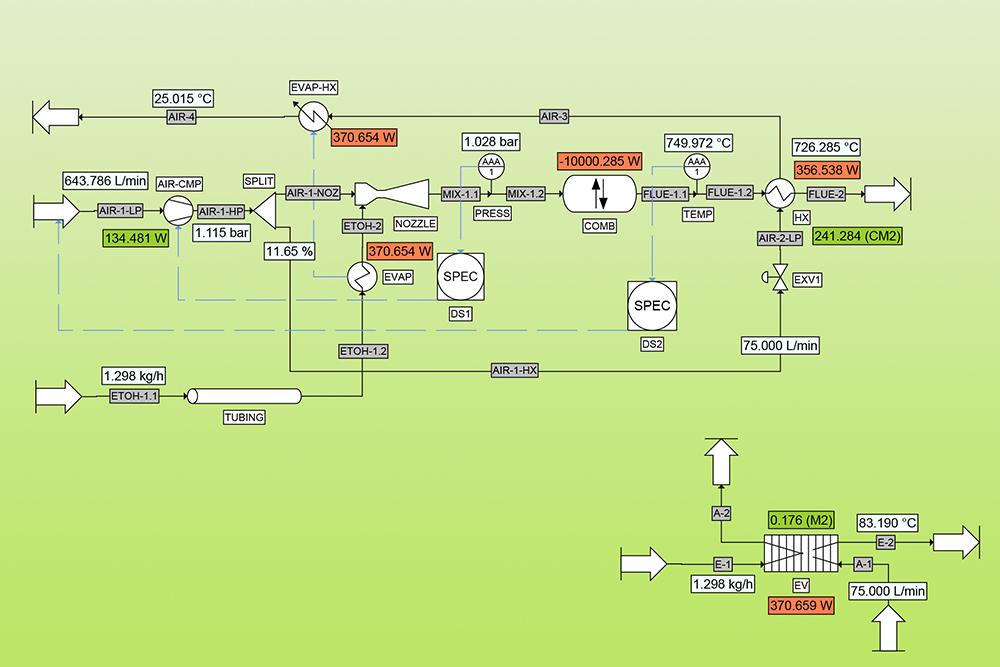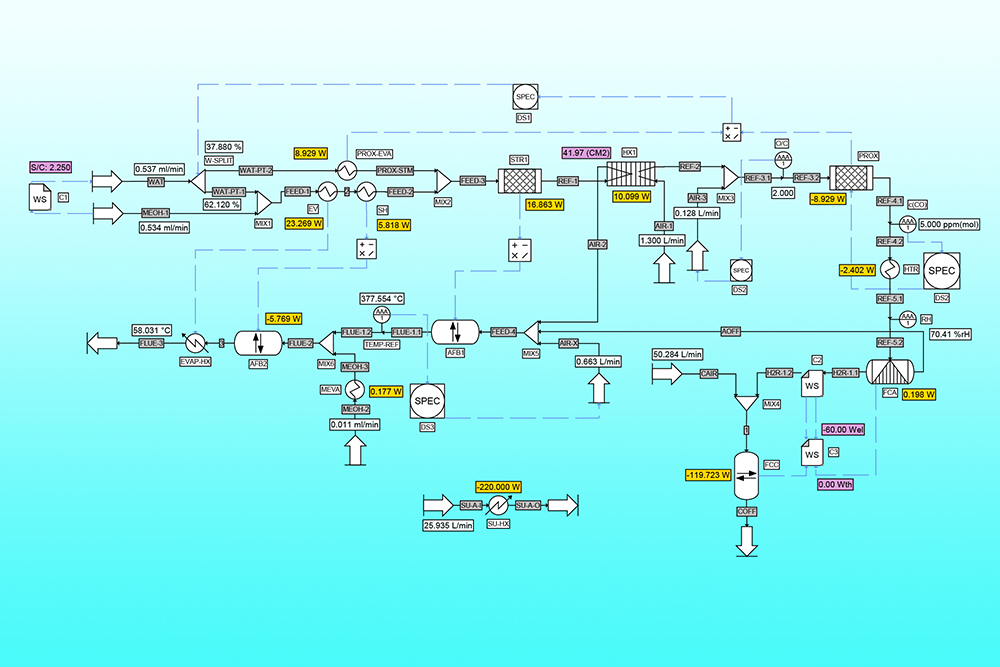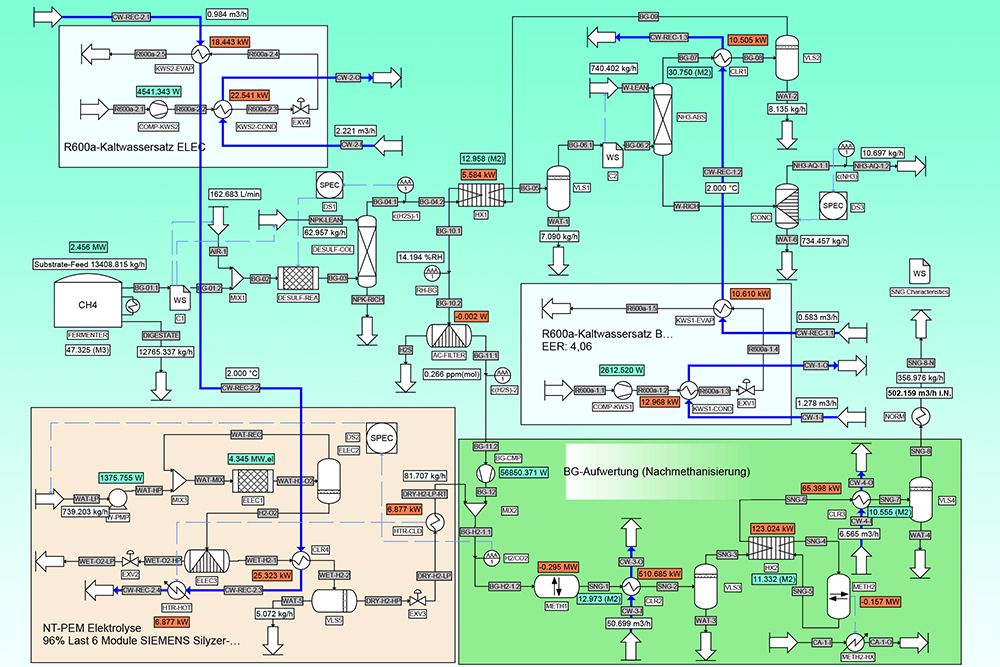The development and optimization of technical processes for the production of chemicals or the conversion of energy sources require model-based tools on the way to the final process, the final reactor or the final plant. The design and modeling of a single reactor is comparatively simple. It becomes much more complex when taking into account the interconnection of reactors and the quantitative simulation of the propagation of volume flows in the overall system in order to determine which process parameters ultimately lead to which conversion result. Questions about resulting emissions need to be answered in advance, as well as the omnipresent demand for cost estimates must be taken into account. To develop a process that is optimally adapted to requirements, we use a range of tools in addition to our hardware portfolio, our development experience and our manufacturing know-how.
You benefit from:
- Use of ProSIM as established simulation and optimization software
- Consideration of the overall ecological balance with the help of UMBERTO®.
- Experience in cost estimations including balance-of-plant with the inclusion of external offers
Application example "Decentralized provision of synthetic natural gas (SNG)"
In the course of a Fraunhofer internal project, a cost-effective, decentralized and sus-tainable fuel supply system based on biogas production, gas processing and methanation was designed. Using microstructured IMM reactors carbon dioxide from the fermentation of biomass is converted into methane by a catalytic process which is currently being prepared for upscaling. The hydrogen required in this process is regeneratively produced using a PEM electrolyzer.
For modeling the energy efficiency of the overall SNG generation process, sub-models of all basic process operations and auxiliary plants of the process were created: these include biogas generation, the process of desulfurization, removal of ammonia by means of normal pressure water washing, catalytic methanation of biogas, generation of hydrogen by means of a PEM electrolyzer, auxiliary plants for the treatment of water, and plants for the thermal treatment of fermentation residues from biomass fermentation. Thus, an energy efficiency of about 30 percent and a carbon efficiency of about 27 percent were estimated. In the life cycle assessment of biogas methanation, the use of wind power for hydrogen production resulted in advantageous values for CO2 emissions, especially for emerging countries. Perspectively decreasing investment costs for electro-lyzers and also for the catalytic methanation process itself hold the potential to halve the costs for SNG production.
 Fraunhofer Institute for Microengineering and Microsystems IMM
Fraunhofer Institute for Microengineering and Microsystems IMM

